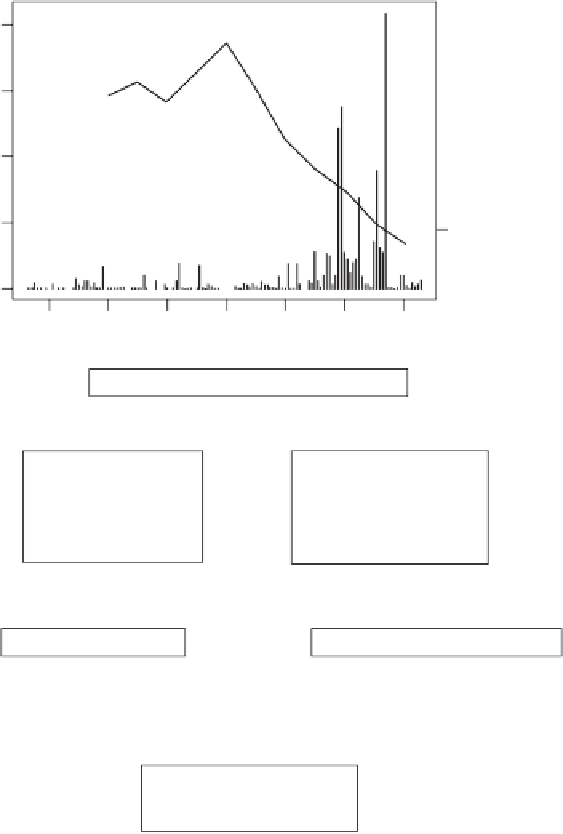Geoscience Reference
In-Depth Information
switch from rainforest to fire prone sclerophyll vegetation (see Chapter 3) (Rule et al. 2012).
Over time, aboriginal people learned to manipulate the fire regime, replacing broad-scale fires
with patch mosaic burning, thereby creating a fine-scale of mosaic of postfire ages, in contrast
to the previous fire regime where fires are likely to have swept over vast areas. The 'fire-stick
farming' hypothesis describes the use of fire to increase the availability of resources by
(a)
Area burnt (× 1000 ha)
Rural population density
80
1. 2
60
0.9
40
0.6
20
0.3
0
1880
1900
1920
1940
1960
1980
2000
(b)
Marginal agricultural land and pasture
Land abandonment
Driven by:
• Limited labour supply
• Poor accessibility
• Remoteness
• Low soil quality
Afforestation
Driven by:
• Land degradation fears
• High timber value
• Financial incentives
Fire
Fire
Scrub encroachment
Monospecific tree plantations
Fire
Fire
Forest cover
• High fuel load
• Fire prone
Fig ure 4.7
The impact of rural land abandonment on fire regimes in the Mediterranean region of
Europe. (a) Effect of depopulation in eastern Spain, showing changes in rural population density (inhab-
itants/ha) during the twentieth century and corresponding increase in area burned (in thousands of ha)
(Pausas and Keeley 2014). Reproduced with permission of Springer Science + Business Media. (b)
Feedbacks between land-cover change and fire regime (Shakesby 2011). Reproduced with permission
from Elsevier.








































Search WWH ::

Custom Search